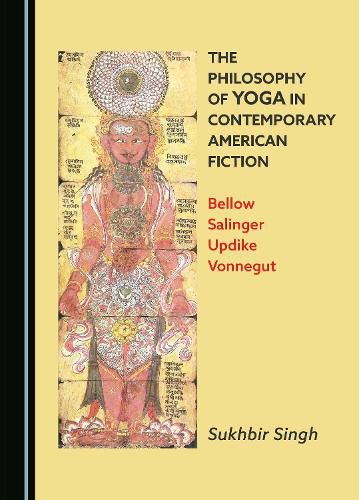Readings Newsletter
Become a Readings Member to make your shopping experience even easier.
Sign in or sign up for free!
You’re not far away from qualifying for FREE standard shipping within Australia
You’ve qualified for FREE standard shipping within Australia
The cart is loading…






Following the Second World War, yoga has asserted its presence in America and impacted the American culture, arts, and literature. This book offers extensive explications of Saul Bellow's Mr. Sammler's Planet, J.D. Salinger's "Teddy," John Updike's S.: A Novel, and Kurt Vonnegut's Slaughterhouse-Five in the light of the four different yoga philosophies interwoven into their respective narrative structures. The comparative analyses of these four contemporary American fictions unveil the deeper mystical motifs implicit in their plots, stories, themes, and characters' behavioural patterns. The exhaustive interpretations of texts in the five successive chapters put forth an exposition of how the ancient Indic philosophy and contemporary American fiction interact to explicate and enrich each other. The book adds a unique, unconventional dimension to the comparative and interdisciplinary investigation into contemporary American fiction and thereby opens up new vistas of an off-beat interface between the Eastern philosophy and Western literature.
$9.00 standard shipping within Australia
FREE standard shipping within Australia for orders over $100.00
Express & International shipping calculated at checkout
Following the Second World War, yoga has asserted its presence in America and impacted the American culture, arts, and literature. This book offers extensive explications of Saul Bellow's Mr. Sammler's Planet, J.D. Salinger's "Teddy," John Updike's S.: A Novel, and Kurt Vonnegut's Slaughterhouse-Five in the light of the four different yoga philosophies interwoven into their respective narrative structures. The comparative analyses of these four contemporary American fictions unveil the deeper mystical motifs implicit in their plots, stories, themes, and characters' behavioural patterns. The exhaustive interpretations of texts in the five successive chapters put forth an exposition of how the ancient Indic philosophy and contemporary American fiction interact to explicate and enrich each other. The book adds a unique, unconventional dimension to the comparative and interdisciplinary investigation into contemporary American fiction and thereby opens up new vistas of an off-beat interface between the Eastern philosophy and Western literature.